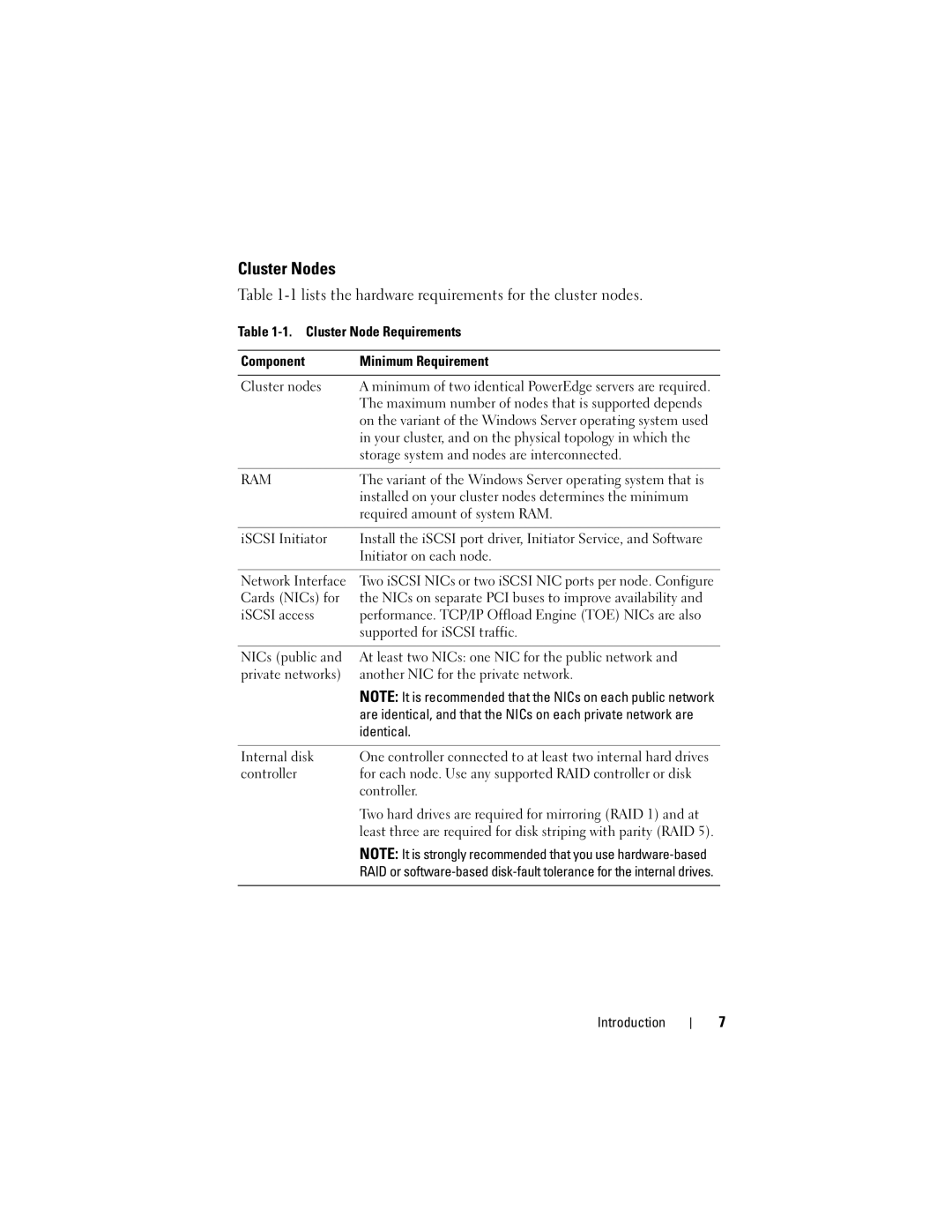
Cluster Nodes
Table 1-1 lists the hardware requirements for the cluster nodes.
Table 1-1. Cluster Node Requirements
Component | Minimum Requirement |
|
|
Cluster nodes | A minimum of two identical PowerEdge servers are required. |
| The maximum number of nodes that is supported depends |
| on the variant of the Windows Server operating system used |
| in your cluster, and on the physical topology in which the |
| storage system and nodes are interconnected. |
|
|
RAM | The variant of the Windows Server operating system that is |
| installed on your cluster nodes determines the minimum |
| required amount of system RAM. |
|
|
iSCSI Initiator | Install the iSCSI port driver, Initiator Service, and Software |
| Initiator on each node. |
|
|
Network Interface | Two iSCSI NICs or two iSCSI NIC ports per node. Configure |
Cards (NICs) for | the NICs on separate PCI buses to improve availability and |
iSCSI access | performance. TCP/IP Offload Engine (TOE) NICs are also |
| supported for iSCSI traffic. |
|
|
NICs (public and | At least two NICs: one NIC for the public network and |
private networks) | another NIC for the private network. |
| NOTE: It is recommended that the NICs on each public network |
| are identical, and that the NICs on each private network are |
| identical. |
|
|
Internal disk | One controller connected to at least two internal hard drives |
controller | for each node. Use any supported RAID controller or disk |
| controller. |
| Two hard drives are required for mirroring (RAID 1) and at |
| least three are required for disk striping with parity (RAID 5). |
| NOTE: It is strongly recommended that you use |
| RAID or |
|
|
Introduction
7
